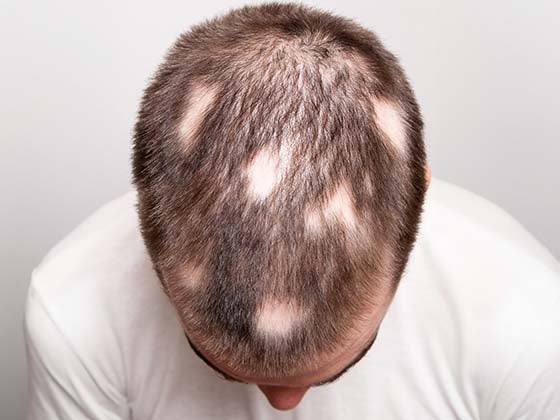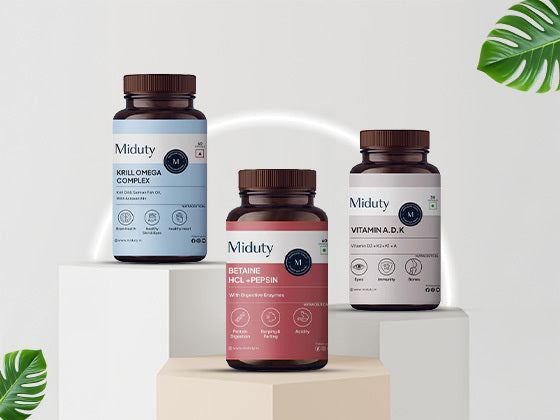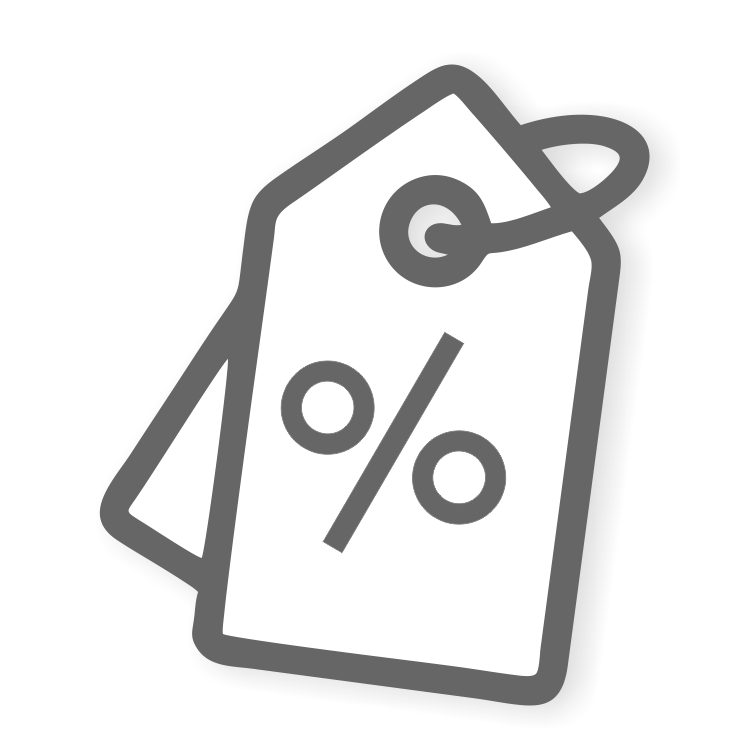Herbal teas can offer a tasty and all-natural way to ease the discomfort of menstruation. We'll examine herbal teas in this blog post that can naturally ease menstrual pain.
Understanding Menstrual Cramps and Herbal Tea Remedies

Menstrual cramps, also known as dysmenorrhea, are a typical and frequently painful aspect of the menstrual cycle. These cramps happen when the uterine muscles contract to lose the uterine lining. The discomfort can vary in strength and length, usually originating in the lower abdomen and occasionally spreading to the lower back and thighs. Understanding the underlying causes and trying herbal tea cures will help you manage your discomfort.
How Teas Can Naturally Relieve Menstrual Discomfort

Herbal teas address inflammation, muscular spasms, hormonal imbalances, stress, and digestive problems, providing a natural and calming solution to menstruation discomfort. You can experience a more comfortable menstrual cycle and naturally reduce cramping symptoms by consuming certain teas, such as ginger, peppermint, chamomile, and others.
Benefits of Herbal Teas for Menstrual Health

Herbal teas can improve menstruation health by treating typical symptoms like cramps, bloating, exhaustion, mood swings, and hormone imbalances. Herbal beverages enhance menstrual health in the following ways:
-
Alleviating menstrual cramps: Many herbal teas contain compounds that help reduce uterine contractions, easing the pain associated with menstrual cramps. Ginger, known for its anti-inflammatory properties, reduces prostaglandin levels (hormone-like substances that cause uterine contractions) and relieves pain and discomfort. Peppermint tea contains menthol, which relaxes the muscles of the uterus and helps to relieve cramps and abdominal discomfort. Fennel contains antispasmodic properties that help relax the uterine muscles and reduce cramping.
-
Reducing inflammation: Inflammation in the uterine lining is a key cause of menstrual cramps. Several herbal teas contain anti-inflammatory chemicals that can reduce inflammation and relieve discomfort. Curcumin, the main ingredient in turmeric, is well-known for its powerful anti-inflammatory properties. It helps reduce inflammation in the uterus, alleviating pain and cramps. Chamomile has anti-inflammatory properties that can help reduce uterine swelling and other areas affected by menstrual discomfort.
-
Regulating hormonal imbalances: Hormonal fluctuations, especially high estrogen levels, can exacerbate menstrual symptoms. Certain herbal teas promote hormonal balance and help alleviate symptoms associated with hormonal imbalance. This plant is commonly used to tone the uterine muscles and maintain hormonal balance, minimizing heavy bleeding and unpleasant cramps. It helps manage blood sugar and insulin levels, which can help balance hormones and alleviate menstruation cramps.
-
Supporting digestion and reducing bloating: Bloating and stomach discomfort are frequent symptoms of menstruation. Many herbs have carminative qualities that help with gas, bloating, and digestive sluggishness. Peppermint is well-known for its ability to relieve digestive disorders such as bloating, indigestion, and nausea, which are common during menstruation. It improves good digestion, relieves nausea, and lowers bloating, making it an excellent tea for menstruation support.
-
Easing stress and anxiety: Stress and worry can worsen menstruation pain. Herbal teas with relaxing characteristics can help to relax the body and mind, making it easier to deal with both physical and emotional discomfort. Chamomile has mild sedative qualities that relieve tension, increase relaxation, and alleviate sleep difficulties that are frequently associated with menstruation. Lemon balm reduces anxiety and promotes calm, which is very useful for regulating mood swings and irritation during menstruation.
-
Supporting overall menstrual health: In addition to alleviating symptoms, certain herbal teas enhance overall menstrual health by encouraging regular cycles, increasing blood flow, and maintaining uterine health. Raspberry leaf is known for its ability to tone the uterus, regulate menstrual cycles, and alleviate menstrual cramps. Turmeric promotes general reproductive health by boosting blood circulation and lowering inflammation, resulting in a healthy menstrual cycle.
-
Boosting energy and reducing fatigue: Many women feel tired during their periods because of hormonal imbalances and blood loss. Some herbal teas can help increase energy and lessen the lethargy that comes with menstruation. Ginger improves circulation and energy levels, reducing the weariness that might accompany menstruation. Cinnamon has a gentle warming effect that might assist improve circulation and alleviate weariness during menstruation.
-
Improving sleep quality: Sleep can be disturbed by menstrual discomfort, such as cramping and mood swings. During menstruation, herbal teas that encourage relaxation and lower stress levels might enhance the quality of sleep. Famous for its relaxing properties, chamomile can ease mental and physical discomfort while promoting better sleep. During menstruation, lemon balm's gentle sedative properties can assist promote better sleep and mental clarity.
Choosing the Right Tea for Cramps

The best tea for menstrual cramps relies on the underlying cause of the pain and your personal preferences. Different herbs provide distinct advantages, ranging from inflammation reduction and muscle relaxation to hormone balance and stress relief. Here's a guide to help you choose the finest tea for cramps based on your requirements:
-
Pain relief and muscle relaxation: If your cramps are caused by muscle contractions, you’ll want to choose teas that help relax the uterine muscles and relieve tension.
-
Reducing inflammation: Teas with anti-inflammatory qualities can help lessen the pain and swelling if inflammation in the uterine lining is a major contributing factor to your cramps.
-
Hormonal balance: Hormonal imbalances, particularly high levels of estrogen or low progesterone, can lead to more severe menstrual cramps. Hormone-balancing teas may alleviate cramps and enhance overall menstrual health.
-
Stress relief and better sleep: Stress and worry can exacerbate menstrual cramps, so selecting teas that promote relaxation and lower stress is essential for overall relief.
-
Digestive support: If your cramps are accompanied by bloating, nausea, or digestive issues, look for teas that support digestion.
-
Overall uterine health: Certain teas can assist in tone and strengthen the uterus, which can eventually result in less severe cramps if you're trying to manage your cramps and maintain your general uterine health.
-
Combination of benefits: If you want a holistic approach to menstrual cramps that targets many symptoms such as pain, inflammation, and stress, consider combining herbs for optimum relief.
Top Herbal Teas to Soothe Period Cramps

Herbal teas might be an excellent natural cure for treating menstrual cramps. The following are some of the best herbal teas that are proven to ease menstruation pain by lowering inflammation, calming muscles, and encouraging relaxation in general:
-
Ginger has anti-inflammatory and muscle-relaxing effects, making it one of the most effective teas for relieving period cramps. It acts by reducing the formation of prostaglandins, substances that cause painful uterine contractions.
-
Peppermint is well-known for its muscle-relaxing properties, particularly for the digestive system, but it also helps to relax the uterine muscles during menstruation. It also helps alleviate nausea and bloating.
-
Chamomile has mild sedative and muscle-relaxing properties. It can help ease menstruation discomfort and cramps because of its anti-inflammatory and pain-relieving properties.
-
Raspberry leaf is known for toning and strengthening the muscles of the uterus, which can help reduce the intensity of menstrual cramps. It also helps balance hormones, promoting smoother menstrual cycles.
-
Fennel Tea is known for its antispasmodic qualities, which aid in calming the uterine muscles and relieving cramping. It also relieves bloating and intestinal discomfort, which are common during menstruation.
-
Turmeric's primary ingredient, curcumin, is a potent anti-inflammatory that can help lessen uterine inflammation and ease discomfort and cramping.
-
Cinnamon tea has anti-inflammatory and antispasmodic qualities that can help alleviate uterine contractions and pain. It also helps to control blood sugar levels, which can promote hormonal balance.
-
Lemon balm tea has mild calming effects that might help relieve stress and anxiety, which can exacerbate period cramps. It also relieves headaches and stomach problems.
-
Clove Tea has anti-inflammatory and analgesic properties, making them effective for reducing menstrual pain. They also help alleviate nausea and bloating, which can accompany period cramps.
-
Red Clover Tea helps balance hormones, reduce inflammation, and regulate menstrual flow. It also supports overall reproductive health.
Chamomile Tea: Calm Inflammation and Pain

Chamomile tea is an effective and soothing option for alleviating menstrual pain and inflammation. Chamomile's calming, muscle-relaxing, and anti-inflammatory qualities can ease cramps, encourage relaxation, and enhance menstrual comfort in general. Including chamomile tea in your regimen can help you manage menstrual discomfort and promote your health throughout your period gently and naturally.
Ginger Tea: A Natural Anti-Inflammatory for Pain Relief

A natural and efficient method of reducing inflammation, easing period cramps, and enhancing general menstrual comfort is to drink ginger tea. It is a great option for treating period pain because of its anti-inflammatory, pain-relieving, and muscle-relaxing properties. Additionally, ginger is a versatile treatment for menstrual discomfort due to its capacity to promote digestion and reduce nausea. Regularly consuming ginger tea during your period can help reduce cramps and offer general relief from several menstrual symptoms.
Raspberry Leaf Tea: Traditional Remedy for Cramps

Raspberry leaf tea is a mild, natural medicine that has been used for years to promote menstrual health and relieve cramps. Raspberry leaf tea can help reduce the severity of period pain by toning and strengthening the uterine muscles, lowering inflammation, balancing hormones, and supplying essential nutrients. For best results, it’s recommended to drink raspberry leaf tea regularly in the weeks leading up to your period for long-term benefits. This traditional herbal remedy is a safe, natural, and effective way to manage menstrual discomfort and promote overall reproductive health.
Peppermint Tea: Cooling and Soothing Effects

Menstrual cramps and associated discomfort can be effectively treated with peppermint tea, which is cooling and calming. It is a complete treatment for period pain management because of its capacity to ease nausea, aid in digestion, relax muscles, and lower inflammation. Peppermint tea might be your go-to choice for a natural, relaxing method of reducing menstrual symptoms. It will help you feel better physically and emotionally while you're on your period. With few negative effects, regular peppermint tea use during menstruation can help make the experience more comfortable.
Additional Tips for Using Teas to Alleviate Cramps

In addition to selecting the appropriate herbal teas such as chamomile, ginger, raspberry leaf, and peppermint, some various suggestions and strategies can assist maximize the effectiveness of teas in relieving menstrual cramps and improving general comfort during your period. To get the most out of your herbal tea remedies, drink tea regularly rather than just when symptoms appear, combine teas for added benefits, sip slowly and mindfully, adjust tea strength to your needs, drink tea at the right times, use warm compresses in conjunction with different herbal teas, pair tea with a healthy diet, and use teas as part of a holistic approach.
Dosage and Safety: How Much Tea is Beneficial?

When taken in moderation, herbal teas can be a great and natural method to ease the discomfort and cramping associated with menstruation. Depending on the herb and your personal needs, drinking one to three cups of tea per day is usually safe and beneficial. Always get medical advice if you are taking medication, pregnant, or nursing. You may support your general menstrual health and reap the full advantages of herbal teas by consuming them carefully and in moderation.
When to Drink Tea for Optimal Relief

When utilizing herbal teas to ease the discomfort of menstruation, timing is crucial. When you drink the tea, how often you drink it, and how your body responds at different points during your menstrual cycle all affect how effective the tea is. Here are some recommendations for the best times to drink tea to reduce the pain and cramping associated with menstruation.
-
Start drinking tea: You can avoid more severe cramps by starting to drink herbal tea a few days before the start of your period. Since several herbs, like chamomile, ginger, and raspberry leaf, have cumulative effects, it is best to take them frequently in the days before your period. About three to five days before the anticipated onset of your period, begin drinking soothing or anti-inflammatory teas, such as ginger or raspberry leaf tea. Once your period starts, this can help lessen the severity of your cramps and other symptoms.
-
Drink tea in the morning: Tea in the morning, especially chamomile or peppermint tea, helps set the tone for the day by soothing the body and reducing tension. This is especially helpful when dealing with discomfort or mood swings associated to the menstrual cycle. Drink a cup of peppermint or chamomile tea first thing in the morning to help calm your digestive tract, lessen bloating, and treat mild cramps. Additionally calming, these teas can aid in reducing stress and anxiety in the morning.
-
Drink tea after meals: Menstrual bloating and intestinal problems are prevalent during menstruation. Drinking tea after meals can aid digestion and minimize bloating, particularly if the drink contains digestive herbs such as peppermint or ginger. Drink peppermint tea 30 minutes after meals to avoid bloating, or ginger tea to relieve gas and indigestion. This is especially useful if you have intestinal issues during your period.
-
Drink tea in the afternoon: If cramps or other symptoms such as exhaustion or headaches return in the afternoon, a cup of herbal tea can help control the discomfort and keep the symptoms from increasing. Peppermint and ginger tea are great for increasing energy and treating moderate cramps. Drink a cup of ginger tea or peppermint tea during the afternoon slump to combat weariness and prevent cramps from worsening.
-
Drink tea before bed: Many women experience pain and discomfort at night, which can interfere with sleep. Menstrual cramps can interfere with sleep, so drinking soothing teas like peppermint or chamomile before bed can help ease mental tension, relax muscles, and enhance sleep quality. To assist ease tense muscles, unwind the body, and get ready for a good night's sleep, sip chamomile or peppermint tea 30 to 60 minutes before bed. Before bed, chamomile is a great option because it helps reduce pain and encourages relaxation.
-
Drink tea throughout the day: For ongoing menstrual relief, it’s helpful to drink tea regularly throughout the day to maintain consistent levels of pain relief and muscle relaxation. Raspberry leaf tea is especially good for toning the uterus and easing menstrual cramps over time. If you're dealing with chronic cramps, sipping on raspberry leaf tea throughout the day (1-3 cups) can help support uterine health and relieve cramping. You can alternate with chamomile tea or ginger tea as needed for extra relief.
-
Drink tea during menstrual peaks: The first 1-2 days of menstruation are usually the most painful and uncomfortable. Drinking tea on these days is very beneficial for pain relief and lowering bloating, nausea, and exhaustion. Drink ginger tea for pain relief and inflammation, or peppermint tea to alleviate nausea and bloating. These teas offer immediate relief when symptoms are at their worst.
-
Drink tea on the last days: The final days of menstruation may still come with some residual cramps, bloating, or fatigue. Tea consumption during this stage can aid in the body's healing and reduce any residual pain. Keep drinking peppermint or chamomile tea to promote relaxation and lessen any last cramps. Additionally, raspberry leaf tea can aid in uterine toning and postmenstrual healing.
-
Listen to your body: Menstrual cramps and pain can be experienced differently by each person. Some women may require more tea at certain times of the day, whereas others may find that drinking less frequently gives relief. Paying attention to when your symptoms are the most severe will help you determine when to consume tea. If you feel a cramp coming on, drink a cup of ginger tea or peppermint tea to relieve the discomfort quickly. If you’re feeling bloated, opt for peppermint tea after meals. Adjust the timing of your tea based on your body’s needs.
Combining Herbal Teas for Enhanced Benefits
Combining herbal teas can be an efficient strategy to maximize their effects, especially when looking for relief from menstrual cramps. By combining herbs with complementary characteristics, you can make a personalized tea that addresses numerous symptoms at once, such as cramping, bloating, exhaustion, or mood swings. Here are some popular and successful combinations for increased relief of menstruation discomfort:
-
Ginger + Peppermint: Ginger and peppermint have strong anti-inflammatory properties that can help relieve cramps and discomfort. Peppermint relieves muscle tension and digestive disorders such as bloating and nausea, whereas ginger alleviates pain and inflammation. During your period, this combination is excellent for lowering cramps, nausea, and enhancing digestion.
-
Chamomile + Lavender: Both lavender and chamomile are well known for their calming and relaxing properties, which can help you feel less stressed and anxious during your period. Additionally, both have anti-inflammatory qualities that help ease menstruation pain and cramps. This blend is perfect for fostering relaxation, lowering stress, and enhancing sleep—all of which can help control discomfort, sleeplessness, and mood fluctuations associated with menstruation.
-
Raspberry Leaf + Ginger: Raspberry leaf is known for its capacity to tone the uterus and relieve cramps, whereas ginger reduces inflammation and provides pain relief. Together, they help to alleviate period pains and support the uterus. This concoction promotes circulation, lessens cramping, and tones the uterus. For those who experience excruciatingly painful periods, it works wonders.
-
Peppermint + Fennel: Peppermint is a muscle relaxant and anti-spasmodic, while fennel seeds help relieve bloating, gas, and digestive discomfort. This combination works well for menstrual cramps, digestive issues, and bloating. This blend helps reduce cramping, bloating, and digestive issues, while also providing a soothing effect for an upset stomach.
-
Chamomile + Lemon Balm: Both chamomile and lemon balm have relaxing, stress-reducing properties. While chamomile lowers inflammation, lemon balm has a mildly relaxing impact that may help you sleep better during your period. This combination is perfect for managing stress, improving sleep, and reducing mild menstrual cramps or migraines.
Beyond Teas: Holistic Approaches to Menstrual Comfort

A comprehensive approach to menstrual health incorporates a variety of techniques to manage both the physical and emotional symptoms of menstruation. Herbal teas, nutrition, exercise, stress reduction strategies, and natural therapies such as heat therapy and essential oils can all be used to create a thorough self-care routine that enhances menstruation comfort. Experiment with several tactics and mix them in a way that best serves your body and mind during your cycle.








































